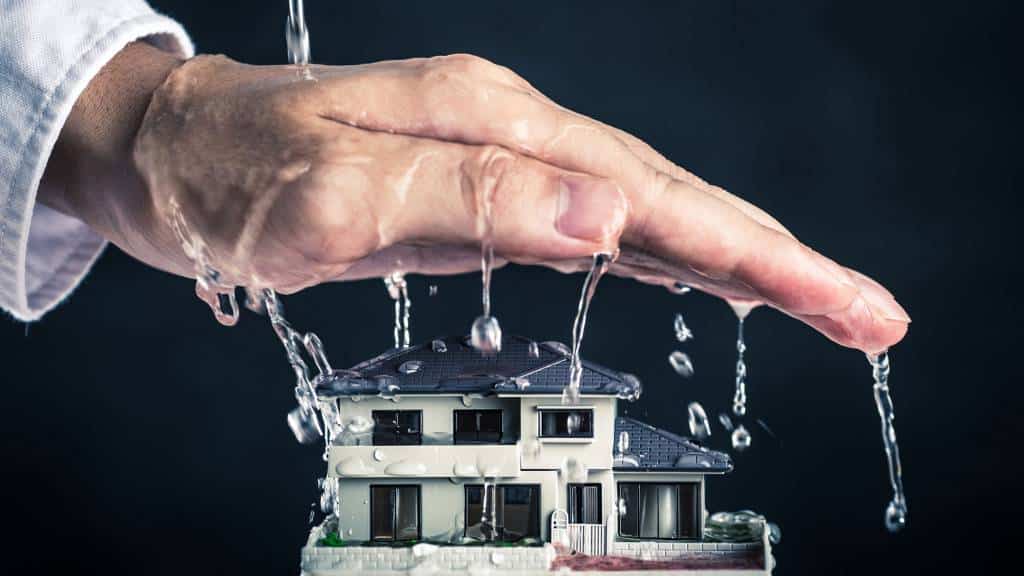Discover the Key Factors Contributing To Water Leakage in Your Home
Discover the Key Factors Contributing To Water Leakage in Your Home
Blog Article
Each person will have their private assumption in relation to How Fast Water Damage Can Ruin Your Home.
/GettyImages-957479686-f3d2e677f2e749fc98aa207b474c5c1f.jpg)
Leakages not just create waste of water yet can additionally cause unnecessary damage to your home as well as advertise undesirable natural development. Water leaks might go unnoticed because many of the pipework in our home is hidden. By looking as well as understanding for daily scenarios that create leakages, you can secure your home from future leaks as well as unneeded damage. Today, we will consider 6 leakage triggers that may be creating your pipes to drip.
Trespassing roots
Many water leaks begin outside your home instead of inside it. If you see an abrupt decline in water stress, say in your faucet, take time to head out as well as examine your yard. You might discover damp patches or sinkholes in your backyard, which could suggest that tree origins are attacking water lines causing water to permeate out. You can have your plumber check for intrusion, particularly if you have trees or bushes near your property.
Corroded water supply
As time passes by, your plumbing system ages as well as corrosion such as corrosion might start eating away the pipelines. This might be the source of discoloration or warping on your water pipes. This asks for an assessment with your plumber right away. Consider replacing the pipelines since they are at a higher risk of corrosion than the newer versions if our plumbing system is old.
Malfunctioning Pipe Joints
Pipeline joints can degrade over time, resulting in water leakages. If you have noisy pipes that make ticking or banging noises, especially when the warm water is transformed on, your pipe joints are probably under a lot of stress.
Immediate temperature changes.
Extreme temperature level changes in our pipelines can create them to increase as well as acquire all of a sudden. This expansion as well as tightening may trigger fractures in the pipelines, specifically if the temperature are below freezing.
Poor Water Connectors
At times, a leak can be created by loose pipes and also pipelines that supply your devices. In situation of a water connections leakage, you might see water running directly from the supply line or pools around your home appliances.
Obstructed Drains
Clogged drains pipes may be irritating as well as inconveniencing, but they can sometimes wind up triggering an overflow bring about break pipes. Maintain getting rid of any type of materials that might go down your drains pipes that could obstruct them to prevent such inconveniences.
All the above are root causes of leaks but not all water leakages arise from plumbing leakages; some leakages may come from roofing leakages. All leakages need to be fixed instantly to avoid water damages.
Leakages not only create waste of water yet can additionally create unneeded damage to your home and promote undesirable natural growth. By recognizing and also looking for daily circumstances that cause leakages, you can safeguard your residence from future leaks and also unneeded damage. Today, we will look at six leakage triggers that might be triggering your pipelines to trickle.
At times, a leakage can be created by loosened tubes and pipes that supply your appliances. In situation of a water connections leakage, you may observe water running straight from the supply line or pools around your appliances.
How To Check For Water Leak In Your Home
How To Check for Leaks
The average household's leaks can account for nearly 10,000 gallons of water wasted every year and ten percent of homes have leaks that waste 90 gallons or more per day. Common types of leaks found in the home are worn toilet flappers, dripping faucets, and other leaking valves. These types of leaks are often easy to fix, requiring only a few tools and hardware that can pay for themselves in water savings. Fixing easily corrected household water leaks can save homeowners about 10 percent on their water bills.
To check for leaks in your home, you first need to determine whether you're wasting water and then identify the source of the leak. Here are some tips for finding leaks:
Take a look at your water usage during a colder month, such as January or February. If a family of four exceeds 12,000 gallons per month, there are serious leaks.
Check your water meter before and after a two-hour period when no water is being used. If the meter changes at all, you probably have a leak.
Identify toilet leaks by placing a drop of food coloring in the toilet tank. If any color shows up in the bowl after 10 minutes, you have a leak. (Be sure to flush immediately after the experiment to avoid staining the tank.)
Examine faucet gaskets and pipe fittings for any water on the outside of the pipe to check for surface leaks.
Undetected water leaks can happen without the home or business owner even realizing. If you suspect a water leak, but not able to find the source. It is time to contact a professional water leak detection service, The Leak Doctor.
How To Find a Water Leak In Your Home
https://www.leakdoctor.com/blog/How-To-Check-For-Water-Leak-In-Your-Home_AE197.html

We were shown that report about Top Causes of Home Water Leaks from an associate on another web page. I beg you set aside a second to distribute this blog entry if you liked it. Thank you for your time spent reading it.
Instant fix? Dial! Report this page